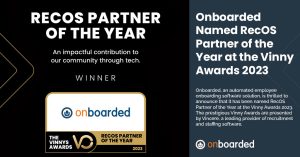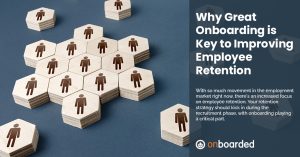
Onboarded Named RecOS Partner of the Year at the Vinny Awards 2023
Onboarded, an automated employee onboarding software solution, is thrilled to announce that it has been named RecOS Partner of the Year at the Vinny Awards 2023. The prestigious Vinny Awards are presented by Vincere, a leading provider of recruitment and staffing software. The event recognises innovation and success in the recruitment industry.










